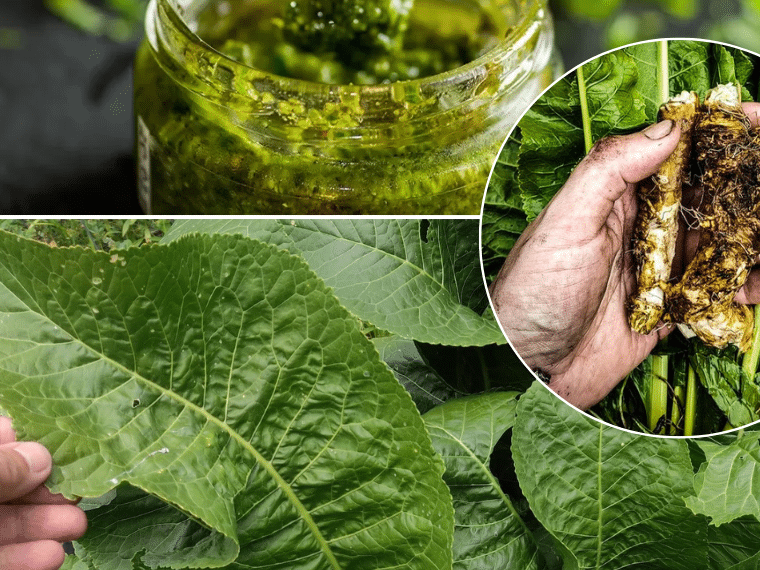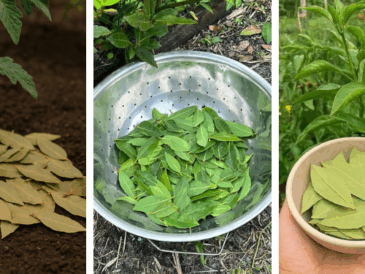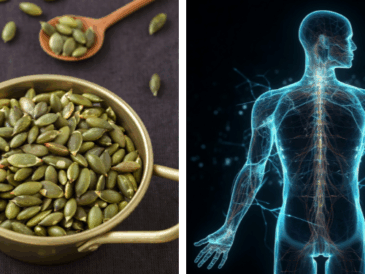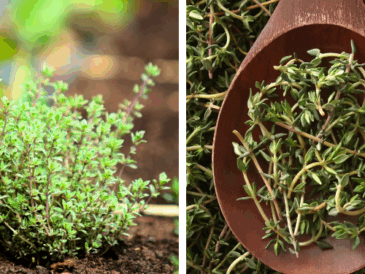When most people think of horseradish, they picture the fiery white root grated into sauces that bring tears to the eyes and warmth to the chest.
But hidden above ground, the horseradish leaves – often overlooked and discarded – hold their own remarkable benefits.
The Forgotten Green: What Makes Horseradish Leaves Special
Horseradish (Armoracia rusticana) is a hardy perennial from the mustard and cabbage family (Brassicaceae).
While its root has been prized for centuries as a spice and natural medicine, its broad, crinkled green leaves have been largely underused.
Yet, like kale or arugula, horseradish leaves are rich in nutrients:
- Vitamin C – strengthens the immune system and supports collagen production.
- Vitamin A and K – essential for healthy skin, eyes, and blood clotting.
- Calcium, magnesium, and potassium – maintain strong bones and regulate blood pressure.
- Glucosinolates and isothiocyanates – sulfur-containing compounds responsible for the plant’s sharp taste and detoxifying effects.
These same compounds give horseradish its anti-inflammatory, antibacterial, and antioxidant properties – making the leaves as powerful as the root in many ways.
1. Horseradish Leaves for Wellness and Natural Healing
Detoxification and Liver Support
Horseradish leaves stimulate the body’s natural detox pathways. The glucosinolates in the leaves help activate enzymes in the liver that neutralize toxins and aid elimination.
Adding them to salads or teas can support gentle cleansing and rejuvenation, especially after heavy meals or periods of fatigue.
Natural Antimicrobial Power
The spicy compounds in horseradish – particularly allyl isothiocyanate – have strong antibacterial and antifungal effects.
These help protect the body from common infections and pathogens, making horseradish leaves a natural immune booster.
Historically, poultices made from crushed leaves were applied to wounds or chest congestion to draw out impurities and promote healing.
Anti-Inflammatory and Pain-Relieving Effects
Like other cruciferous greens, horseradish leaves can help reduce inflammation linked to joint pain, muscle soreness, and arthritis.
When used topically, their warming effect stimulates blood flow, easing stiffness and tension – similar to mustard plasters used in traditional folk medicine.
How to use:
- Mash fresh leaves slightly and apply as a warm compress for sore joints or chest congestion.
- Infuse chopped leaves in olive oil for a few days to create a mild warming massage oil.
Rich in Antioxidants
Free radicals are unstable molecules that accelerate aging and cellular damage. The antioxidants in horseradish leaves – particularly vitamin C and phenolic compounds – help neutralize them, protecting your skin and body from oxidative stress.
Consuming the leaves regularly supports:
- Healthier skin with improved elasticity.
- Stronger immune defense against seasonal illnesses.
- Better recovery after stress or physical exertion.
Digestive Stimulation
The slightly bitter, peppery taste of horseradish leaves stimulates digestive juices and bile flow, helping the body break down fats and absorb nutrients more efficiently.
Just a few raw leaves added to a meal can awaken sluggish digestion – especially after rich or heavy foods.
Respiratory Health Support
Traditionally, horseradish was known as a “cleansing root” for the lungs. The same volatile compounds that make your eyes water when grating the root also help clear mucus and open airways.
Steeping the leaves in hot water releases mild vapors that can soothe congestion, coughs, or sinus pressure.
Simple remedy: Steep 3–4 fresh leaves in boiling water for 10 minutes, inhale the steam, then drink as a detox herbal infusion with honey and lemon.
2. Culinary Uses: Turning Horseradish Leaves into Flavorful Creations
Horseradish leaves are edible when young and tender, offering a flavor somewhere between arugula and mustard greens – slightly bitter, with a pleasant heat that fades when cooked.
They can be eaten raw, steamed, sautéed, or even pickled. The key is balance – their sharpness pairs beautifully with creamy, tangy, or starchy foods.
1. Fresh in Salads
Use young, early-spring leaves (3–5 inches long) in mixed salads. Their peppery bite adds excitement without overpowering other greens.
Pair with:
- Soft cheeses like goat cheese or feta
- Citrus segments or pears for sweetness
- Toasted walnuts or sunflower seeds for crunch
- Olive oil and lemon juice for dressing
This combination enhances both flavor and nutrient absorption.
2. Sautéed or Steamed as a Side
Older leaves can be slightly tough and pungent but become mild and tender when cooked.
How to cook:
- Wash and chop leaves.
- Sauté in olive oil with garlic for 3–5 minutes.
- Add a splash of apple cider vinegar or soy sauce for tang.
This creates a quick, healthy side dish similar to sautéed kale or collard greens – ideal with fish, grains, or roasted vegetables.
3. Horseradish Leaf Pesto
Replace basil with horseradish leaves for a bold, spicy twist on traditional pesto.
Ingredients:
- 2 cups young horseradish leaves (washed)
- ½ cup nuts (walnuts, almonds, or pine nuts)
- ½ cup olive oil
- 2 cloves garlic
- ½ cup Parmesan cheese (optional)
- Salt and lemon juice to taste
Blend until smooth. Use it on pasta, roasted potatoes, sandwiches, or grilled vegetables for a nutrient-rich flavor boost.
4. Pickled Horseradish Leaves
In Eastern Europe, horseradish leaves have long been used to flavor and preserve pickles. Their natural antimicrobial properties help keep cucumbers crisp and safe during fermentation.
How to use: Add one or two large leaves to your pickle jar – they act as a natural preservative and add a subtle spice. You can also pickle the leaves themselves for a unique condiment.
5. Wraps and Stuffed Rolls
The broad, flexible leaves can replace cabbage or grape leaves in traditional rolls.
Idea: Blanch leaves in hot water for 20 seconds, then stuff with cooked rice, herbs, and vegetables. Roll tightly and steam or bake.
The mild heat of the leaves infuses the filling, giving your dish a distinctive aromatic flavor.
6. Herbal Infused Oil or Vinegar
Preserve the essence of horseradish leaves by infusing them in oil or vinegar.
- For oil: Combine clean, dried leaves with olive or sunflower oil. Let sit for 2–3 weeks in a cool, dark place.
- For vinegar: Add fresh leaves to apple cider vinegar and steep for one week.
Use these infusions in dressings, marinades, or as a natural home remedy for colds and muscle aches.
3. Growing and Harvesting Horseradish Leaves at Home
Horseradish is incredibly easy to grow – and once planted, it tends to stay for years.
How to Grow:
- Sunlight: Full sun to partial shade.
- Soil: Well-draining, slightly sandy soil.
- Watering: Moderate – keep the soil moist but not waterlogged.
- Propagation: Start from root cuttings (known as “sets”) planted in early spring.
The plant will produce large, glossy leaves throughout the summer, and by autumn, the root will be ready for harvest.
When to Harvest Leaves:
- Young leaves: tender, mild flavor – ideal for salads.
- Mature leaves: spicier, best for cooking or pickling.
Regular trimming encourages new growth and prevents the plant from getting too tough or bitter.
4. Preserving Horseradish Leaves for Year-Round Use
To enjoy their benefits beyond the growing season, try one of these preservation methods:
Drying
Spread clean leaves on a mesh tray and air dry in a shaded, well-ventilated area. Once crisp, crumble and store in airtight jars. Dried leaves can be added to soups, teas, or spice blends.
Freezing
Blanch whole leaves in boiling water for 20 seconds, cool, pat dry, and freeze in airtight bags. Use them directly in cooking without thawing.
Fermenting
Combine leaves with saltwater brine and let ferment for 7–10 days. Fermented horseradish leaves develop probiotic qualities that aid digestion and support gut health.
5. Safety Tips and Precautions
While horseradish leaves are generally safe, a few precautions help you use them wisely:
- Avoid excessive raw consumption: The high mustard oil content can cause mild stomach irritation in sensitive individuals.
- Don’t use on broken skin: If using as a compress, avoid open wounds or sensitive areas.
- Pregnancy caution: As with the root, very large amounts may stimulate uterine contractions – moderation is key.
- Always wash thoroughly: Wild or homegrown leaves can harbor soil bacteria or insects.
When used responsibly, the benefits far outweigh the risks.
6. Horseradish Leaf Tea for Detox and Immunity
A soothing herbal tea made from horseradish leaves can be both cleansing and restorative.
How to prepare:
- Add 4–5 small fresh leaves (or 1 tablespoon dried) to 2 cups of boiling water.
- Cover and steep for 10 minutes.
- Strain and sweeten with honey and a slice of lemon.
Benefits:
- Clears sinuses and lungs.
- Aids digestion and detoxification.
- Strengthens immune response during seasonal changes.
Drink 1–2 cups per day as a gentle, natural tonic.
Next time you harvest horseradish, don’t discard the leaves – they’re nature’s hidden treasure.
Rich in vitamins, antioxidants, and natural compounds that stimulate, cleanse, and protect the body, horseradish leaves deserve a place both in your kitchen and your wellness routine.




